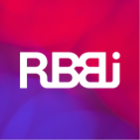Our own UX/CX and service design framework that’s ever evolving with our experience. All our methods and tools are building blocks to designed to deliver a reliable services and products. Our approach will ensure your products and services are designed based on real insights and usable by end-users.
153
Tried & tested methods, tools & techniques
12
Workshops, ideation & brainstorming methods
A framework that starts and ends with the needs of users. These tools, methods and techniques connect us with real human users - their needs, expectations and real insights form the cors to all design our solutions.
Why LADR?
Some may ask why have a framework when you can follow a known methodology or process? Rigid methodologies and processes often force us to follow a pre-defined path for each problem or project. As we started delivering diverse solutions designed toward the unique challanges faced by organisations in the Middle East, we soon realised that a one-size-fits-all approach is not an ideal way to deliver successful projects for the region. The other factor that made us devise this framework based on our experience was the importance given to business objectives, technology driven solutions and the inside-out approach to experience design.
LADR is Inclusive
Every solution has two sides with most weight often given to the needs of businesses. LADR uses strategically selected tools and methods to connect with the needs of users to gain insights and validation. Each LADR and method used varies depending on the nature of the project and the problem at hand.
L EARNABILITY
ADAPTIBILITY
DESIGN
RELEVANCE
LADR goes through a four phase collaborative journey. Sticking to the basic Focus and Flare concepts of Design Thinking, each stages of LADR utilises a variety of methods that are collaborative, balanced and user centric in nature.
Talk & Discover
Discovery methods are used to build context for the problem we’re investigating. Get to know your potential users better and understand your stakeholder's main concerns. The work we deliver during this
phase will inform everything that follows.
phase will inform everything that follows.
Think & Plan
Methods here help us derive insights from the information gathered during the discovery phase. We validate initial assumptions, develop a deeper understanding of workflows and processes and subsequently develop a design hypotheses.
Create & Design
Once we have learned more about your users’ expectations, we use various methods to create testable designs. Sketching, wireframing and prototyping will help us ensure your product reflects the needs of your end-users.
Learn & Grow
Finally methods used in this phase involve iterative testing of the the solution with real users using both qualitative and quantitative tools. This is where we believe the marriage of art and science occurs as we validate our
solution, analyse, learn and grow further through on-going optimisation.
solution, analyse, learn and grow further through on-going optimisation.



